This article was co-authored by Alina Lane, DDS. Dr. Alina Lane is a Dentist who runs All Smiles Dentistry, a general practice dental office based in New York City. After completing a DDS at the University of Maryland, Dr. Lane completed a year-long clerkship in Implantology at the University of Maryland, where she focused on the advanced restoration of dental implants. She continued her advanced education by completing a General Practice Residency at Woodhull Medical Center, an affiliate of the NYU School of Medicine. She received the Woodhull Medical Center Resident of the Year 2012-2013.
There are 13 references cited in this article, which can be found at the bottom of the page.
This article has been viewed 33,426 times.
Toothaches can cause severe pain that impacts your daily life. While all tooth pain should be checked by your dentist, you may not be able to get an appointment right away. Luckily, there are several home remedies you can use that can relieve your pain until you meet with your dentist.
Steps
Using Anti-Inflammatory Medication
-
1Purchase an NSAID pain reliever. Tooth pain is usually caused by swelling in your tooth’s pulp and dentin. Because inflammation causes this pain, an NSAID (nonsteroidal anti-inflammatory drug) is the best type of pain reliever to use. If you don’t have these medications in your home, a local drug store should have several types.[1]
- NSAID pain relievers include aspirin, ibuprofen, and naproxen. These medications are best for your toothache.[2]
- Remember to ask a pharmacist if you’re unsure which medication to buy.
- Some people have allergies to NSAID pain relievers. If you are allergic or aren’t sure, a non-NSAID pain reliever like acetaminophen can help with your pain as well.
-
2Follow the directions on the medication container. All medications are different, even if they’re all classed as NSAIDs. Always check the directions and warnings on any medication you use. Follow the directions as they’re printed on the container.[3]
- This is especially important if you’re on any other medications. Check the warnings to see if this NSAID reacts with any medications you are taking.
Advertisement -
3Swallow the pills with a full glass of water. Depending on the dosage, you may be taking one pill or several. Either way, drink a full, 8 oz. glass of water with the pills. This ensures that you won’t choke on the pills and they won’t get stuck in your esophagus. Pills also need water to dissolve in or they won’t work properly, so drinking helps the medication work effectively.[4]
- Pain relievers sometimes cause an upset stomach if you take them on an empty stomach. To prevent this, you can eat a piece of bread before swallowing the pills.
- Never take medication with alcohol. This can cause a negative reaction.
-
4Repeat this dosage as the directions indicate. Different medications have different recommended doses. The directions on the medication bottle will tell you how many doses you can take daily. By repeating the dosage as directed, you'll keep the medication in your system and prevent the pain and swelling from returning throughout the day. Space these doses out as directed to ensure your system has a steady stream of medication. [5]
- Don't wait for the pain to come back before you take more medication. At that point, the swelling has already returned and it'll take time to reduce it again. Instead, keep the medication in your system so the inflammation doesn't return.
- If it's several days before you can get an appointment with your dentist, then it's best to call your dentist’s office and see if they would recommend you continue taking medication. Taking pain relievers for several days in a row can result in side effects, so only do so under your dentist or doctor's direction.
Reducing Inflammation with Ice
-
1Find an ice or cold pack. Drug stores usually have gel packs that you can keep in the freezer to use as ice packs. If you keep one of these in your home, it’s a perfect product to reduce your tooth pain.[6]
- If you have a gel pack but it isn't cold, you might want to try a homemade ice pack in the next step. Gel packs can take several hours to get cold in the freezer.
- Remember to wrap the ice pack in a towel before using it, because direct contact between your skin and the ice pack can cause frostbite.
- Paper towels can work as well, but they may get too wet from the condensation on the ice pack.
-
2Make an ice pack if you don’t have a gel pack. If you don’t have a store-bought ice pack, there are lots of home remedies for making your own. The easiest way is filling a Ziploc bag half with ice cubes and half with water. Make sure the bag is sealed before using it.
- Another easy method is finding a bag of frozen vegetables in your freezer and using this as an ice pack.[7]
- Remember to wrap your homemade ice pack in a towel as well.
-
3Hold the ice pack on your face near the tooth pain for 10 minutes. This allows the ice enough time to reduce the inflammation and numb the pain without risking damage to your skin. Remove the ice pack after 10 minutes have passed.[8]
- Remember to keep the towel wrapped around the ice pack. Although it may not feel cold enough at first, the cold will work its way through the towel soon enough.
- Put the ice pack back in the freezer in between icing sessions so it stays cold.
- Never fall asleep with an ice pack attached. This can result in damage to your skin and the underlying tissues.
-
4Repeat icing 3 times a day. Icing regularly throughout the day will help keep the inflammation down. Stick to the 10 minutes on, 10 minutes off rule to prevent the ice from damaging your skin.
Soothing Your Mouth with a Salt Rinse
-
1Fill a glass with warm tap water. This water should be warm but not hot. Test the water with your your finger as it’s coming out of the tap. If the water is too hot for your finger, it’s definitely too hot for your mouth.[9]
- Warm water is important for two reasons. First the warmth helps soothe your mouth pain. Second, warm water will dissolve more salt than cold water.
- Boiling water isn't necessary. If the water is too hot, you could burn your mouth and have a whole new kind of mouth pain!
-
2Mix salt into the water until it stops dissolving. Take a spoon in one hand and a salt shaker in the other. Stir the water as you pour the salt in. Stop periodically to check if salt is gathering at the bottom. When this happens, the water is saturated and no more salt can dissolve. It’s now ready for your rinse.[10]
- If you don't have a salt shaker, you can scoop the salt into the cup using a spoon. Just remember to stir continuously so the salt dissolves.
-
3Swish the water in your mouth for 30 seconds. Remember to focus on the area that hurts so you can reduce as much swelling as possible. Try to swish the water through the spaces in your teeth as well, to expose your entire tooth to the salt water. Then spit the water into the sink.[11]
- If the water feels too hot, spit it out right away to avoid burns. Let the water cool a little longer before repeating the rinse.
- Do not swallow any of the salt water.
- If you don't like the taste that the salt water leaves behind, you can rinse again with plain tap water. This will get rid of excess salt left behind.
-
4Repeat the rinse 5 times a day. This will provide a consistent dose of anti-inflammatory treatments to your tooth and help reduce the pain you’re experiencing.[12]
Numbing Your Tooth with Benzocaine Gel
-
1Purchase a gel or cream with benzocaine. Benzocaine is a natural analgesic that has been proven effective against tooth pain. Many oral creams and gels contain this ingredient, and you can find them at your local drug store in the oral care aisle.[13]
- Remember to ask a pharmacist if you’re unsure which gel to buy. There may be a lot of products to choose from and it’s easy to get overwhelmed. Consulting a professional will make your choice much easier.
- Always check the directions and warnings on any medication you use. Follow the directions as they’re printed on the container.
-
2Squeeze a drop on the end of a Q-tip. This is the perfect applicator for the gel. Just cover the end of the Q-tip with gel. That’s all you’ll need to numb your mouth.[14]
- You don’t need to use a Q-tip, but if you use another object make sure it isn’t sharp. Something like a toothpick could stick your gum and cut you, or leave a splinter.
-
3Spread the gel on your gums around the sore tooth. Apply a thick layer around your tooth so the gel soaks in. Spread the entire amount that is on the Q-tip.[15]
- You’ll feel some tingling shortly after you apply the gel. This is a sign of your mouth starting to numb and it's normal.
- Spreading the gel on your tooth itself won’t help much. The enamel of your teeth doesn’t have any nerve endings, so that pain is coming from inside your tooth. That’s why making sure the gel is on your gums is important.
-
4Stop use and wipe off the gel if you feel any itching or notice hives. Some people have allergies to benzocaine. You could have one and not know it. Any signs of an allergic reaction like itching or hives mean you should stop immediately and wipe off the gel. Rinse your mouth out with water as well.[16]
- If you only experience some itching, taking an antihistamine can help.
- If you feel any tightness in your chest or have trouble breathing, seek medical attention immediately. This could be a sign of a life-threatening allergic reaction.
-
5Repeat as directed. You can typically apply oral gel multiple times per day. Follow the instructions on the container and continue applying it as directed.[17]
Expert Q&A
-
QuestionWhat if my toothache pain won't go away?
 Alina Lane, DDSDr. Alina Lane is a Dentist who runs All Smiles Dentistry, a general practice dental office based in New York City. After completing a DDS at the University of Maryland, Dr. Lane completed a year-long clerkship in Implantology at the University of Maryland, where she focused on the advanced restoration of dental implants. She continued her advanced education by completing a General Practice Residency at Woodhull Medical Center, an affiliate of the NYU School of Medicine. She received the Woodhull Medical Center Resident of the Year 2012-2013.
Alina Lane, DDSDr. Alina Lane is a Dentist who runs All Smiles Dentistry, a general practice dental office based in New York City. After completing a DDS at the University of Maryland, Dr. Lane completed a year-long clerkship in Implantology at the University of Maryland, where she focused on the advanced restoration of dental implants. She continued her advanced education by completing a General Practice Residency at Woodhull Medical Center, an affiliate of the NYU School of Medicine. She received the Woodhull Medical Center Resident of the Year 2012-2013.
Board Certified Dentist If a tooth is hurting, it is always best to have a dentist evaluate it as soon as possible. The source of the pain may require different dental treatments that "at-home" remedies may not fix.
If a tooth is hurting, it is always best to have a dentist evaluate it as soon as possible. The source of the pain may require different dental treatments that "at-home" remedies may not fix. -
QuestionWhat should I do if my tooth hurts when I chew?
 Alina Lane, DDSDr. Alina Lane is a Dentist who runs All Smiles Dentistry, a general practice dental office based in New York City. After completing a DDS at the University of Maryland, Dr. Lane completed a year-long clerkship in Implantology at the University of Maryland, where she focused on the advanced restoration of dental implants. She continued her advanced education by completing a General Practice Residency at Woodhull Medical Center, an affiliate of the NYU School of Medicine. She received the Woodhull Medical Center Resident of the Year 2012-2013.
Alina Lane, DDSDr. Alina Lane is a Dentist who runs All Smiles Dentistry, a general practice dental office based in New York City. After completing a DDS at the University of Maryland, Dr. Lane completed a year-long clerkship in Implantology at the University of Maryland, where she focused on the advanced restoration of dental implants. She continued her advanced education by completing a General Practice Residency at Woodhull Medical Center, an affiliate of the NYU School of Medicine. She received the Woodhull Medical Center Resident of the Year 2012-2013.
Board Certified Dentist It's important that you go see a dentist. In the meantime, avoid hard, crunchy, cold, hot, and spicy foods that exasperate the pain, and stick to a soft and low-sugar diet.
It's important that you go see a dentist. In the meantime, avoid hard, crunchy, cold, hot, and spicy foods that exasperate the pain, and stick to a soft and low-sugar diet. -
QuestionWhat medications can I use for tooth pain?
 Alina Lane, DDSDr. Alina Lane is a Dentist who runs All Smiles Dentistry, a general practice dental office based in New York City. After completing a DDS at the University of Maryland, Dr. Lane completed a year-long clerkship in Implantology at the University of Maryland, where she focused on the advanced restoration of dental implants. She continued her advanced education by completing a General Practice Residency at Woodhull Medical Center, an affiliate of the NYU School of Medicine. She received the Woodhull Medical Center Resident of the Year 2012-2013.
Alina Lane, DDSDr. Alina Lane is a Dentist who runs All Smiles Dentistry, a general practice dental office based in New York City. After completing a DDS at the University of Maryland, Dr. Lane completed a year-long clerkship in Implantology at the University of Maryland, where she focused on the advanced restoration of dental implants. She continued her advanced education by completing a General Practice Residency at Woodhull Medical Center, an affiliate of the NYU School of Medicine. She received the Woodhull Medical Center Resident of the Year 2012-2013.
Board Certified Dentist A pain medication, such as ibuprofen or acetaminophen, may also help temporarily reduce pain. However, they should not be used as a long-term treatment.
A pain medication, such as ibuprofen or acetaminophen, may also help temporarily reduce pain. However, they should not be used as a long-term treatment.
Warnings
- Remember that none of these remedies treat the cause of your toothache, they just relieve the pain until you can get an appointment with your dentist. Don’t delay—see your dentist as soon as possible and get the underlying cause treated by a professional.⧼thumbs_response⧽
References
- ↑ https://my.clevelandclinic.org/health/diseases/10957-toothache#management-and-treatment
- ↑ https://my.clevelandclinic.org/health/drugs/11086-non-steroidal-anti-inflammatory-medicines-nsaids
- ↑ https://my.clevelandclinic.org/health/drugs/11086-non-steroidal-anti-inflammatory-medicines-nsaids
- ↑ https://www.urmc.rochester.edu/encyclopedia/content.aspx?contenttypeid=1&contentid=501
- ↑ https://reference.medscape.com/drug/advil-motrin-ibuprofen-343289
- ↑ https://www.healthdirect.gov.au/toothache-and-swelling#looking-after-yourself
- ↑ https://www.redcross.org.uk/first-aid/learn-first-aid/strains-and-sprains
- ↑ https://myhealth.alberta.ca/Health/aftercareinformation/pages/conditions.aspx?hwid=zb1366
- ↑ https://www.nhs.uk/conditions/toothache/
- ↑ https://www.nhs.uk/conditions/toothache/
- ↑ https://www.healthdirect.gov.au/toothache-and-swelling
- ↑ https://www.nhs.uk/conditions/toothache/
- ↑ https://www.mouthhealthy.org/en/az-topics/b/benzocaine
- ↑ https://my.clevelandclinic.org/health/drugs/20991-benzocaine-mouth-gel-ointment-solution-or-dental-paste
- ↑ https://my.clevelandclinic.org/health/drugs/20991-benzocaine-mouth-gel-ointment-solution-or-dental-paste
- ↑ https://www.drugs.com/cdi/benzocaine-oral-cream-gel-liquid-and-ointment.html
- ↑ https://reference.medscape.com/drug/anbesol-orajel-adult-benzocaine-oropharyngeal-999415
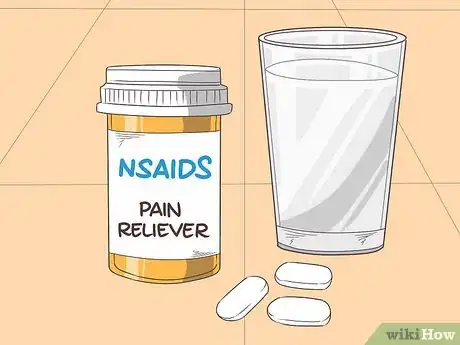
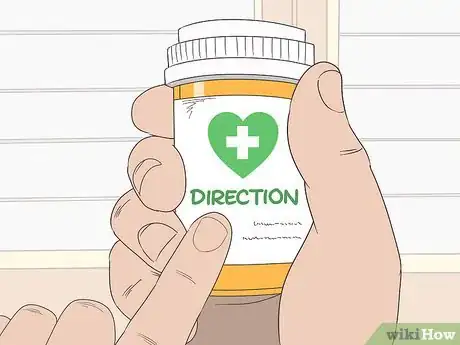
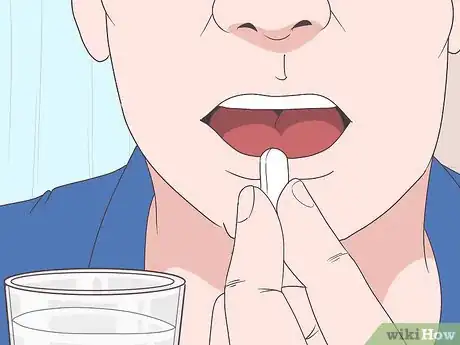
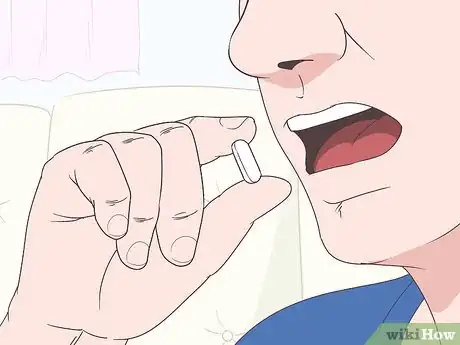
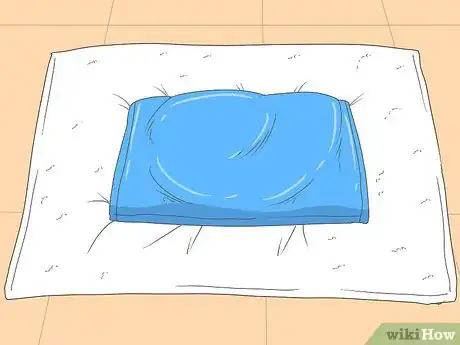
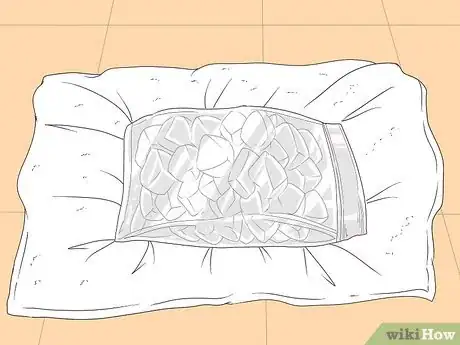
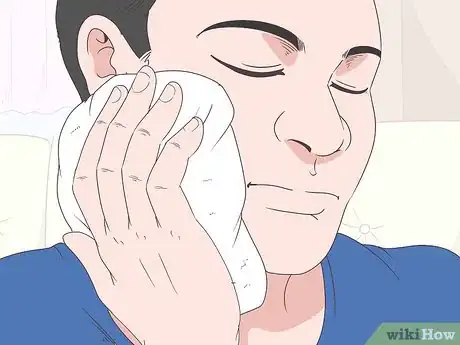
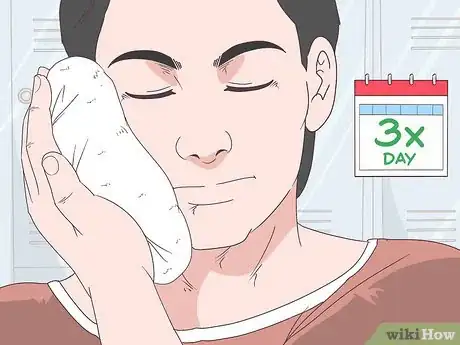


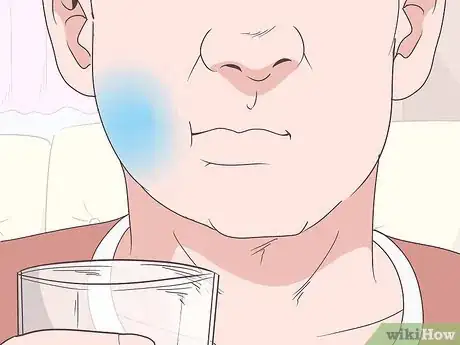
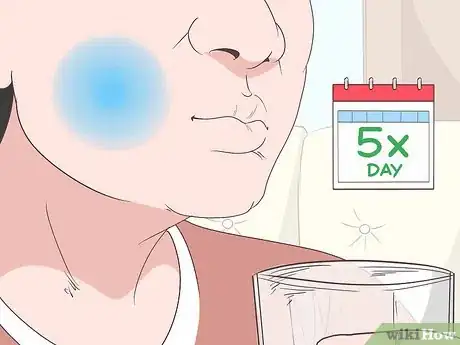
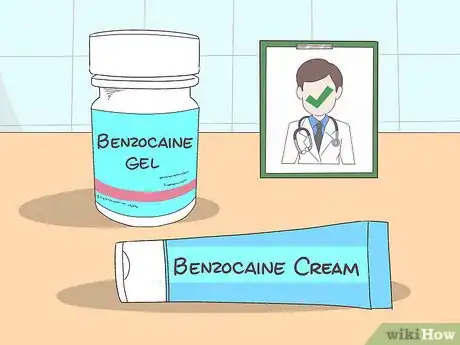
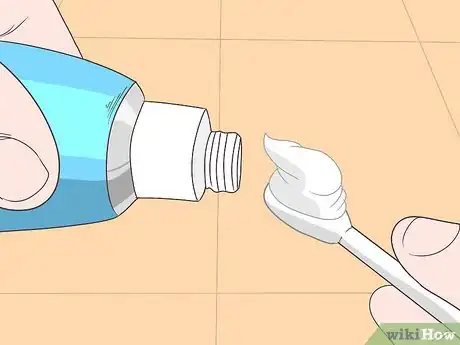

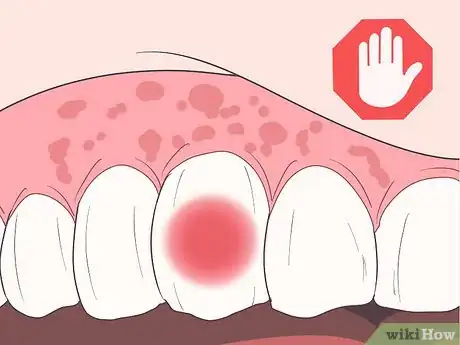

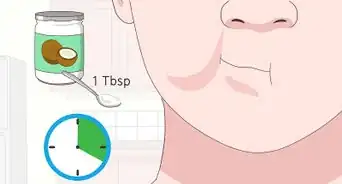
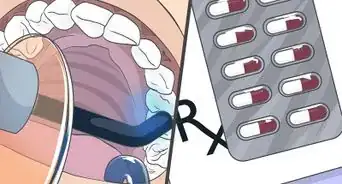
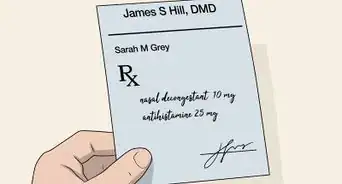

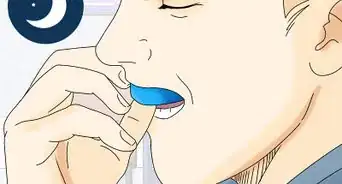
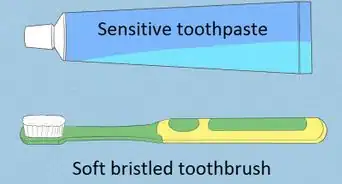



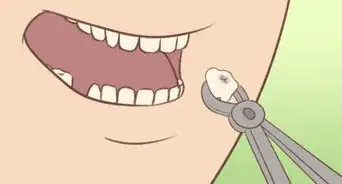

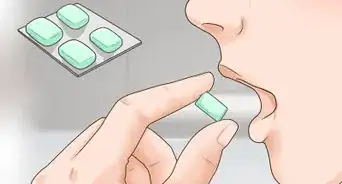
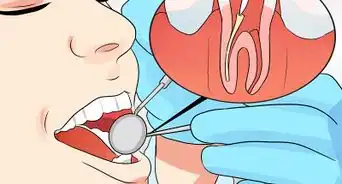








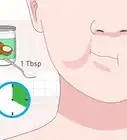

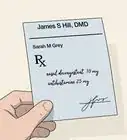
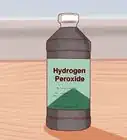



































Medical Disclaimer
The content of this article is not intended to be a substitute for professional medical advice, examination, diagnosis, or treatment. You should always contact your doctor or other qualified healthcare professional before starting, changing, or stopping any kind of health treatment.
Read More...